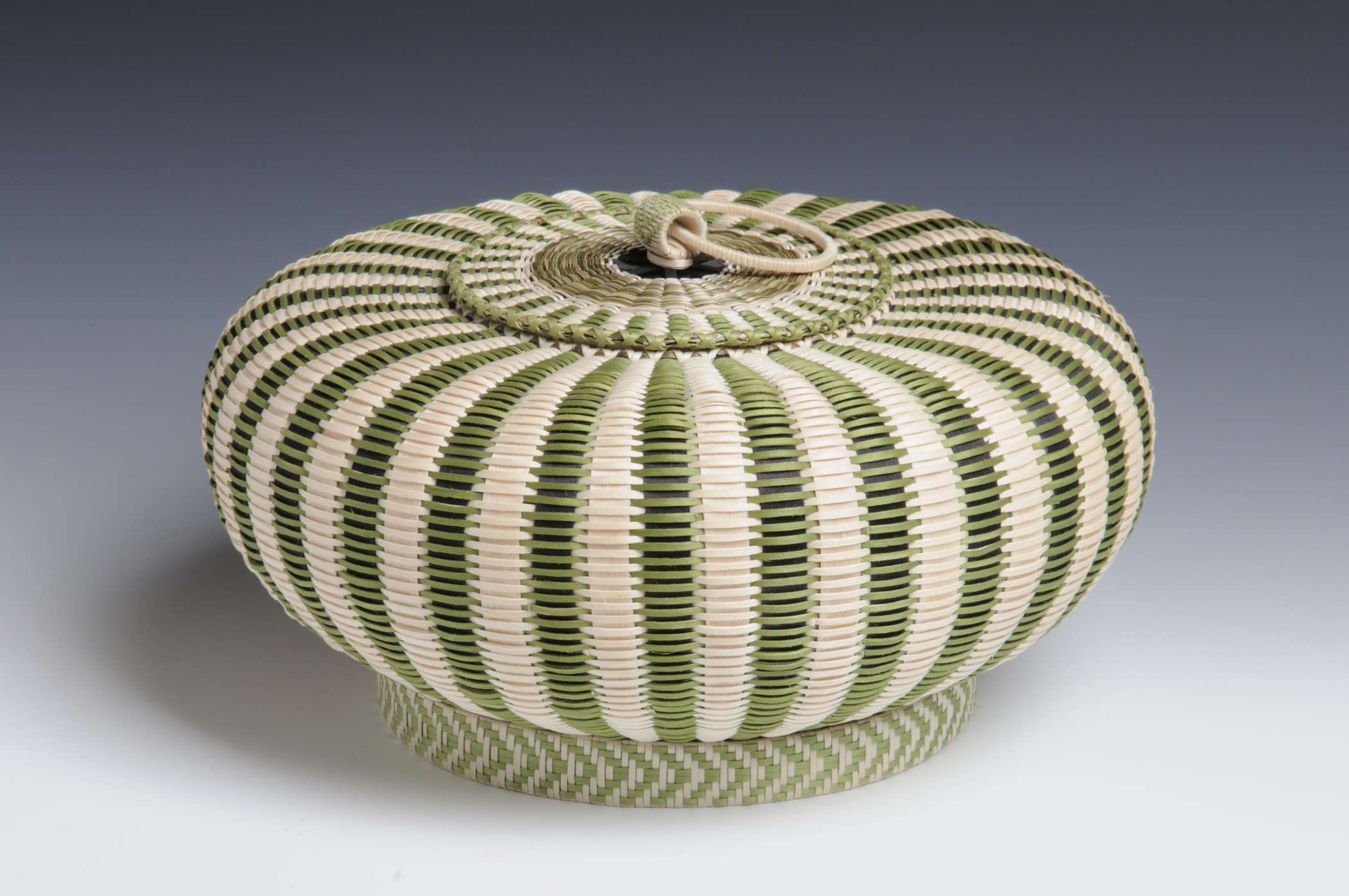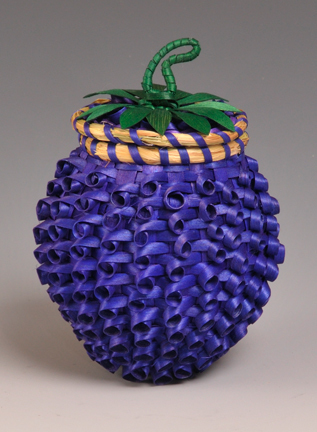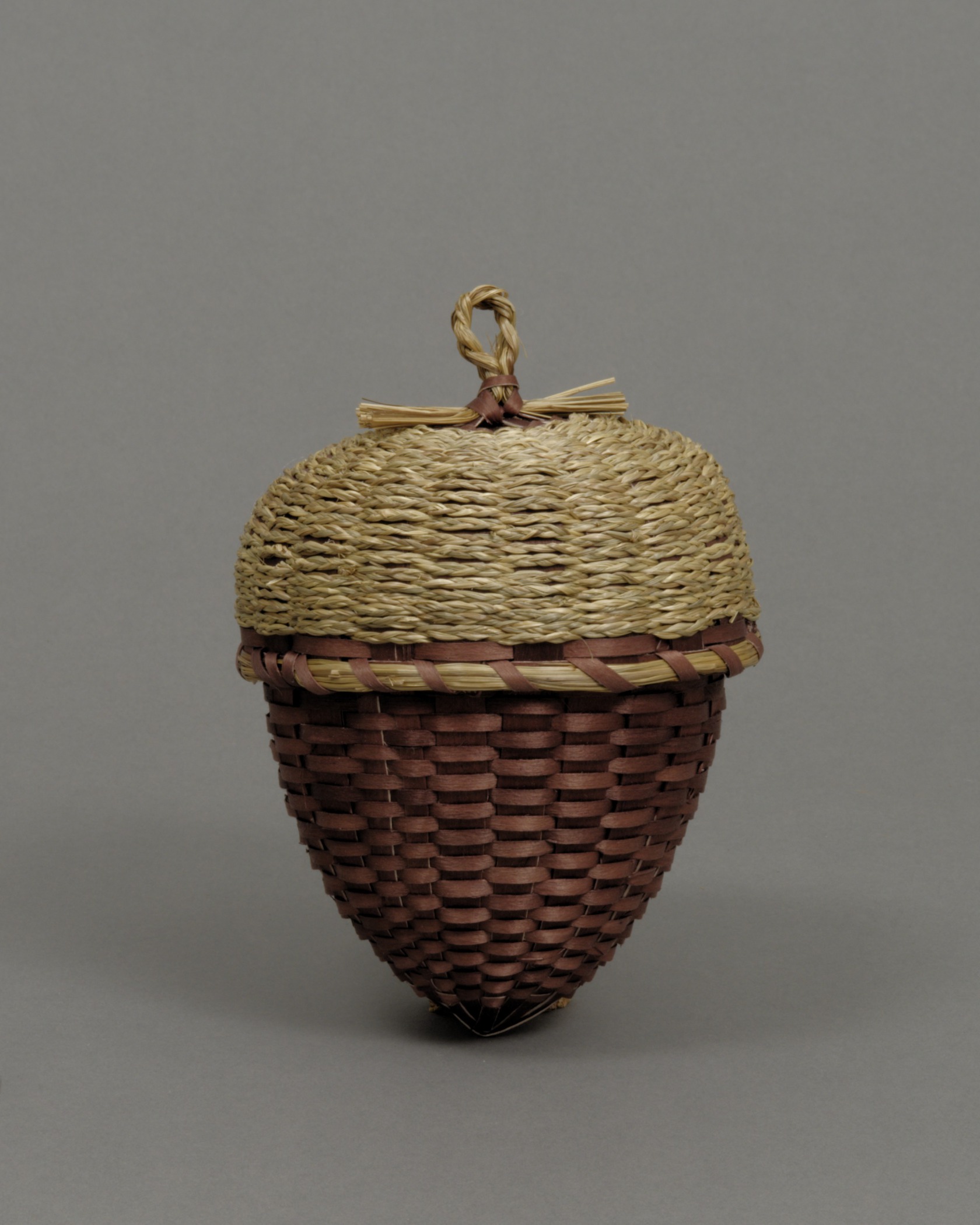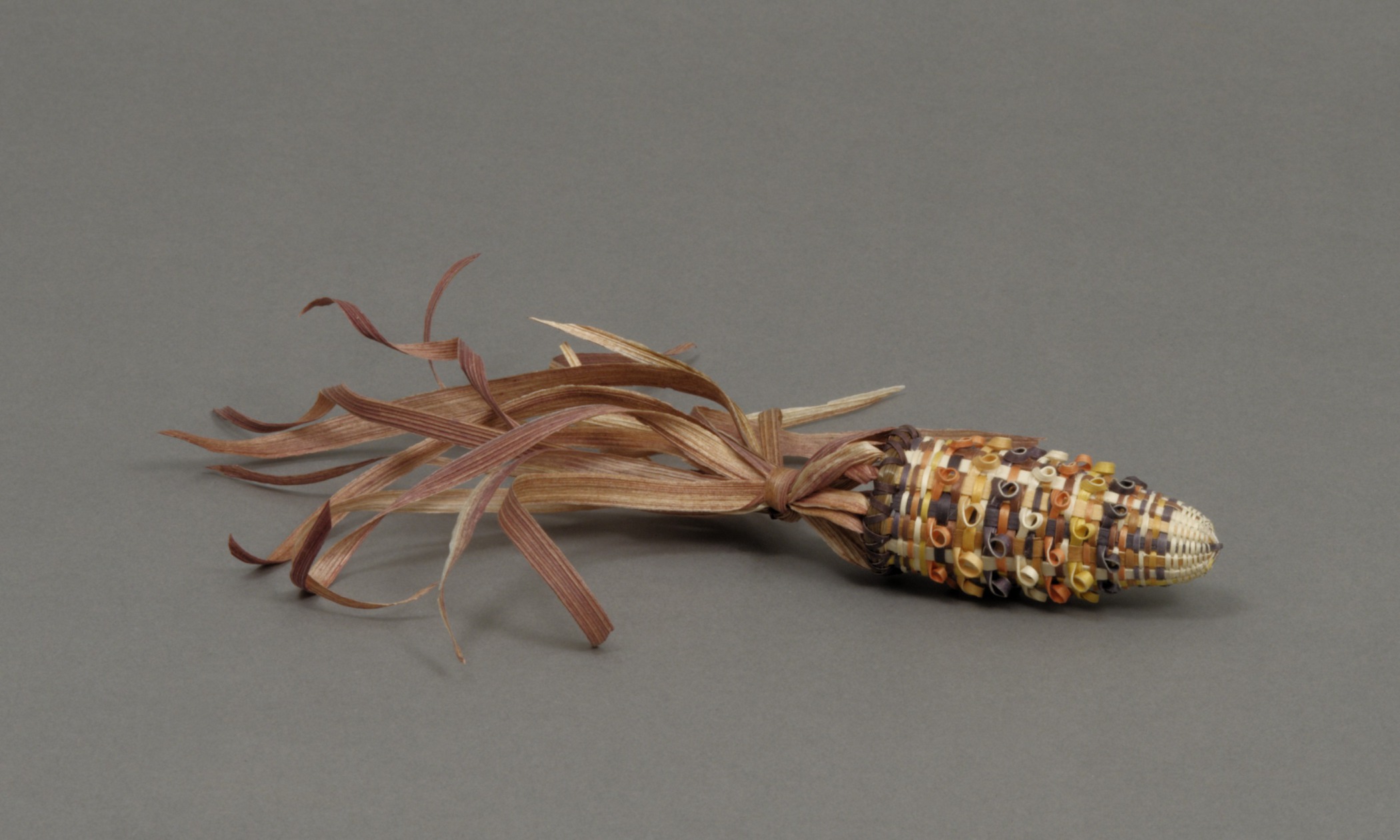Clara Neptune Keezer, American (Passamaquoddy), 1930–2016
Curly blueberry basket
- 2008
- Brown ash and sweetgrass
- 4 1/2 × 3 1/4 in.
Hood Museum of Art, Dartmouth College: Purchased through the Alvin and Mary Bert Gutman ’40 Acquisition Fund; 2008.45.3
visibilityLook & DiscussOver thousands of years, native people of the Northeast Woodlands developed a profound knowledge of the edible resources available in their region. They gathered foods in the form of leaves and roots, nuts and berries, not just in spring and summer, but throughout the year.
Explore the Object
For the Passamaquoddy people of Maine, wild blueberries were and continue to be a particular favorite. Historically, they collected and ate fresh blueberries in late summer and preserved them for winter food. They ate dried berries whole or crushed them into cakes. The Wabanaki used blueberries to preserve meats, and as a seasoning for soups and stews. They also stewed berries into a healing tea or boiled them down to create a syrup used as a cough remedy. They used the juice as a dye. The Wabanaki taught European settlers how to locate and cook with this indigenous fruit.
The great Clara Neptune Keezer, a basket weaver from a family of weavers and leader of the Passamaquoddy people, made this basket in the shape of a blueberry. It is made of very thin ash splints, or strips of wood, which were pre-soaked in bright blue commercial dye. To emphasize the plumpness of the berry, Keezer used a curly weave in the body of the basket. Before threading the horizontal splints through the vertical splints, Keezer twisted them into a curl. Special weaves like this are often handed down in families. Basket weavers respect each other’s ownership and do not use other family’s traditional weaves. The leaves, tiny cut pieces of ash, and the stem, twisted sweetgrass, are both dyed bright green. The rim of the basket and the lid are edged with naturally colored sweetgrass, wrapped in a thin strip of blue ash.
Meet the Artist
Clara Neptune Keezer was born on the Passamaquoddy tribal land of Pleasant Point (Sipayik), one of two Passamaquoddy reservations in the state of Maine. She wove her first basket when she was only 8 years old. When interest in Wabanaki baskets decreased in the 1950s, she played an important role in keeping the tradition of basket weaving strong among the Passamaquoddy by teaching many friends and relatives. She was the first to be named one of Maine’s “Master Basket Makers” and received a lifetime achievement award from the National Heritage Fund. She made this basket when she was 78 years old.
Activity: Simple Basket Weaving
Class Time: 20–30 minutes
This activity is designed to help students learn about the basics of basket weaving and to better appreciate the construction of baskets featured on this website.
Learn More
Visit the website of the Maine Basketmakers Alliance to learn more about Clara Neptune Keezer.





